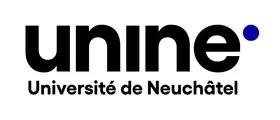
Career Advice
What my Finance Internship Taught me about Economics
Read a summary using the INOMICS AI tool
Towards the end of my undergraduate degree, I had the chance to work with upper-level managers on a strategy retreat as part of a summer finance internship. The internship was at TIAA-CREF (now known as just TIAA), and the retreat intended to help the firm strategize about the direction they should take in several aspects of the company. As a Bachelor’s student specializing in consulting, it was my responsibility to help them make use of a management consulting framework and mindset while doing it.
This experience was my first foray into the finance industry. As I’ve progressed in my own studies, it’s given me plenty to reflect on as I’ve encountered various economic theories of the firm.
Read on for the top three things I learned about economics from my finance internship!
1. Finance is a rich area of research…and the industry can be artificially complex
Finance is not primarily concerned with the stock market, although that’s what most people immediately think of.
TIAA-CREF stands for “Teachers Insurance and Annuity Association of America-College Retirement Equities Fund”. It’s a massive firm that began when US entrepreneur Andrew Carnegie decided to create a not-for-profit pension service for academic professors in 1918. He later created a board of governors to allow educators themselves to help run the non-profit.
Even within this one single firm, I was blown away by the sheer amount of different things that existed. Products and services across this huge firm were varied and sometimes had little to do with each other. TIAA has dozens upon dozens of financial products: annuities, IRAs, HSAs, guaranteed and variable lifetime income vehicles, and more. I could scarcely wrap my head around them all…but that’s, I suspect, a natural result of how the finance industry has evolved.
For example, if finance was easy to navigate, anyone would be able to plan and execute a sufficient retirement plan for themselves. Choosing the right investment vehicles or the right mix of assets would be straightforward. There are other benefits that firms like TIAA could end up serving — for instance, the ability to pool money with other investors to create larger funds — but overall, from a microeconomics perspective, the finance industry is heavily disincentivized from making finance easy to understand to laypeople.
That may be partly because it would cost the finance industry, or society in general, money to broadly educate the public, and partly because some firms’ services benefit from general lack of knowledge about finance. Financial advisors are a great example of this: they’re a useful and thriving service in part because many people don’t have the knowledge (or time to acquire said knowledge) that would let them invest or pursue their financial goals effectively on their own.
This isn’t necessarily malicious. After all, medical doctors are hardly incentivized to educate patients about injuries or diseases that they’re not currently facing, just as financial advisors are likely to provide advice about a specific financial need to specific clients, and not attempt to fill in all of the gaps in their understanding. (Keep in mind that many financial advisors exist to help wealthy clients manage their fortunes, too, which is a useful service that falls outside the bounds of this analogy).
Still, the dark side of this complexity can be seen in the fallout of the 2008-2009 market crisis, which was made worse by banks packaging subprime mortgages (and other assets of questionable value) into new, nearly-inscrutable investments and selling them off. Overvaluation of these assets — which didn’t properly take into account the risks of default, or how rising interest rates and falling home prices could lead to it — led to a devastating butterfly effect that crashed the global economy.
And this is just one example of one type of financial asset, mainly sold by commercial banks involved in real estate. There are many, many different banks, insurance companies, brokerage firms, accounting and tax firms, credit card and payment processing companies, real estate companies, and more, along with plenty of sub-categories for each of these. Each of these organizations might package and sell dozens of products with difficult-to-parse names: CDs, HSAs, ETFs, annuities, commodities, etc.
In short, the finance industry is massive. This means that the movement of money throughout the economy can be very complex, too. The interplay between all of these different firms and the markets they participate in, not to mention foreign markets (and the foreign exchange market itself), determine how much money is available in M1 and M2, affect interest rates, can signal the onset of a recession or recovery, and much more.
By working alongside the TIAA executives during my internship, I got a very interesting glimpse into how keeping all of this complexity straight was difficult — even for them! In fact, the entire premise of their strategy retreat suggested that…
2. Human capital is critical, even in “quantitative” industries
It might be easy to picture a financial firm as a cut-throat, number-crunching entity that doesn’t need any help allocating its resources. Simply get the most money possible from every interaction, and mercilessly cut off any projects that fall below some (at times arbitrary) level of ROI.
Yet the entire point of my internship was to help executives strategize about their portfolios, and also give them tools — via a management consulting skills framework — to think strategically in the future as well. It’s not easy to determine what the best course of action is, even for finance executives!
And finance is one of the most quantitative industries that exists; finding the optimal course of action is likely even harder in industries that don’t have the ability to measure performance as “easily” or “objectively”. How should an art gallery, nail salon, museum, or fast fashion company decide what product mix to offer, or when a new initiative isn’t worth continuing?
The answer usually boils down to the following: people with a lot of experience in the industry make an informed, but not all-knowing, decision. In other words, human capital is extremely important for organizations, something that firms have known for a long time. Salaries are higher for more experienced employees, after all, reflecting this (among other factors) — and it’s much easier to get a job in an industry where you already have experience compared to one you’ve never worked in before.
Human capital is the key ingredient that allows companies to parse through uncertain data and find the best course of action. It’s also where innovation comes from — which is the driving force behind creative destruction, and arguably economic growth itself.
My finance internship showed me that even in a deeply quantitative organization, human capital was still a key component of success, and was seen as worth investing in. It also challenged many core assumptions of the more basic economic models I’d learned in class — clearly, perfect information was not something the firm had. Of course, this doesn’t necessarily invalidate those models — many of them have specific uses that make them still perfectly valid to teach and utilize.
3. Within firms, it’s not all about the money
TIAA is a not-for-profit and was built around the idea of helping professors invest for retirement. As such, it doesn’t have quite the same environment as a for-profit finance entity might. However, my internship still showed me — quite clearly — the value of what economists call a “warm glow”, which is a feeling that comes when you feel good about the work that you’re doing.
The TIAA “retreat” I interned with began with a clear reminder to the executives that their company was not for profit, and aimed to serve people and help them reach their financial goals. Framing the business in this way clearly resonated with the executives, and gave them that “warm glow” feeling. The company’s appeal to their core values and the fact that the executives’ work ultimately helps people reinforced the idea that their work was important and meaningful, and helped the executives to feel proud of their role and excited to strategize.
I’ve witnessed plenty of for-profit companies using similar tactics as well, such as healthcare companies sharing stories of heroic hospital workers or patients who received care within their facilities. These appeals can increase employee productivity, and in many cases probably firm loyalty as well.
In recent decades, there’s been an increasing focus on “corporate social responsibility” (CSR). Firms are increasingly expected to use some of their profits to help improve society around them, and are simultaneously expected to reduce their negative impacts on the environment as much as possible. Certifications have popped up in the past several decades to help consumers find particularly responsible companies, including the “B Corp” designation.
This “corporate responsibility” is another important aspect for firms to consider that can be hard to quantify, but can absolutely affect the bottom line. Some for-profit firms are even founded with an explicit mission to make the world a better place in some measurable way — like Patagonia, which aims to have a positive environmental impact (“Protect our home planet” being one of the core values listed on their website). In some countries there are even novel legal corporate forms, for example since 2005 “Community Interest Companies” (CICs) in the UK, or “gemeinnutzliche” (literally “publically beneficial”) limited companies ( gGmbH) since 2013 in Germany.
Beyond the firm’s perspective, workers themselves are often increasingly searching for jobs that can give them a sense of purpose, or a “warm glow” from the course of their regular job. Deloitte’s “2025 Gen Z and Millennial Survey” found that “Roughly nine in 10 Gen Zs (89%) and millennials (92%) consider a sense of purpose to be important to their job satisfaction”. When searching for a new job, many potential employees nowadays need a bit more motivation than just earning a salary.
This conflicts with the general premise of a cold, hard, economic look at an industry — firms dedicated only to optimizing profits, and employees dedicated only to optimizing their output and thus paychecks — though it doesn’t necessarily disprove it. It’s clear to see how firms could enjoy a boost from a good reputation garnered through CSR initiatives, for one. And, applying an economics perspective, a student might consider how utility-maximizing workers might flock to companies with a strong “warm glow”-giving purpose, because that sense of purpose may increase their personal utility more than a few extra thousand dollars of salary would.
Whether or not your internship is within the finance industry or in another sector, the experience is highly likely to teach you valuable things about the real world that you can take into your studies, and consider again through an economic lens. After all, economics is an amazing field with plenty of theory about the economy and how it works — but it can help to get some real, on-the-ground experience too. If you’re considering an internship, be sure to check out INOMICS’ internship listings; we wish you the best of luck in your search.
-
- PhD-Studiengang
- Posted 1 week ago
PhD Positions at IESE Business School (Barcelona)
Starts 1 Sep at IESE Business School in Spanien
-
- PhD-Studiengang
- Posted 1 week ago
IWH Doctoral Programme in Economics (IWH-DPE) Call for Applications – Fall 2026 Intake
at Halle Institute for Economic Research (IWH) - Member of the Leibniz Association in Halle (Saale), Deutschland
-
- PhD-Studiengang
- Posted 3 days ago
Graduate Program in Economics and Finance (GPEF) - Fully funded Ph.D. Positions
Starts 1 Sep at University of St.Gallen in Sankt Gallen, Schweiz















